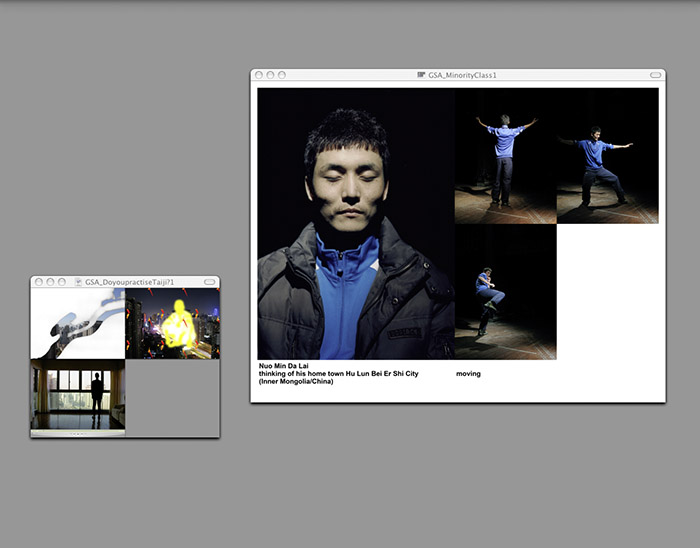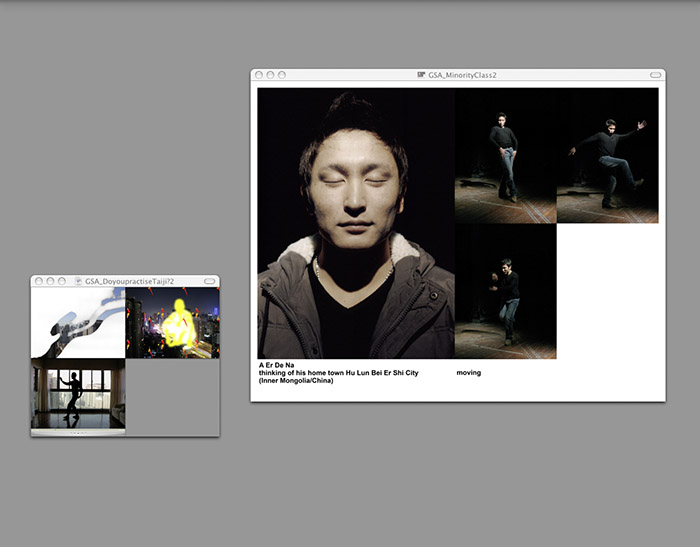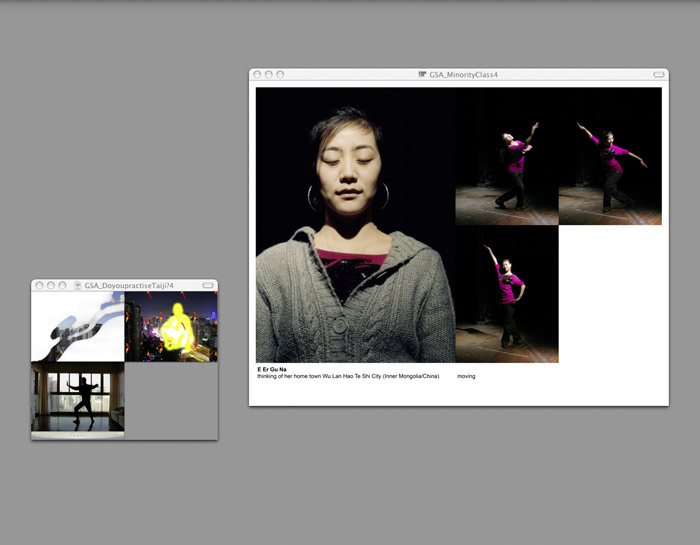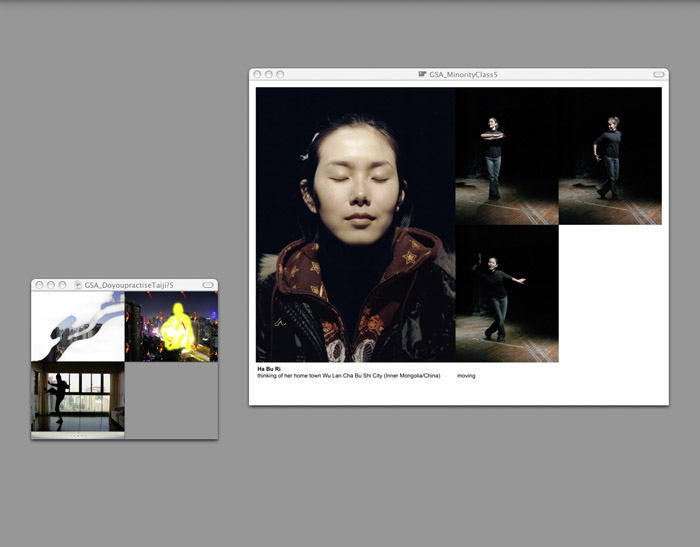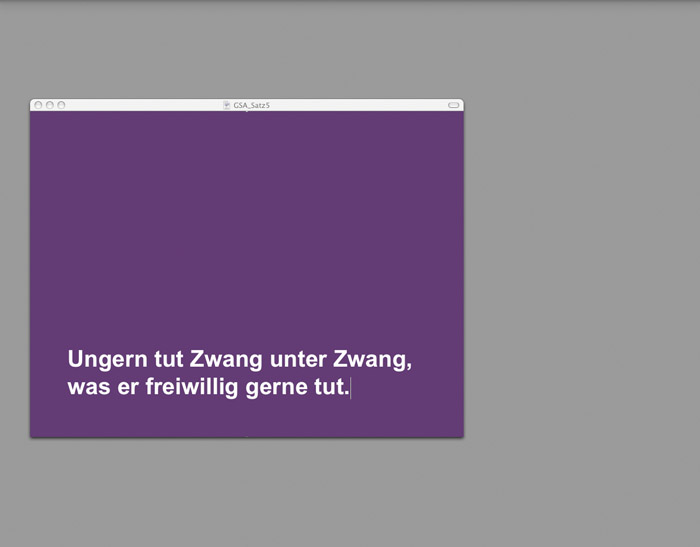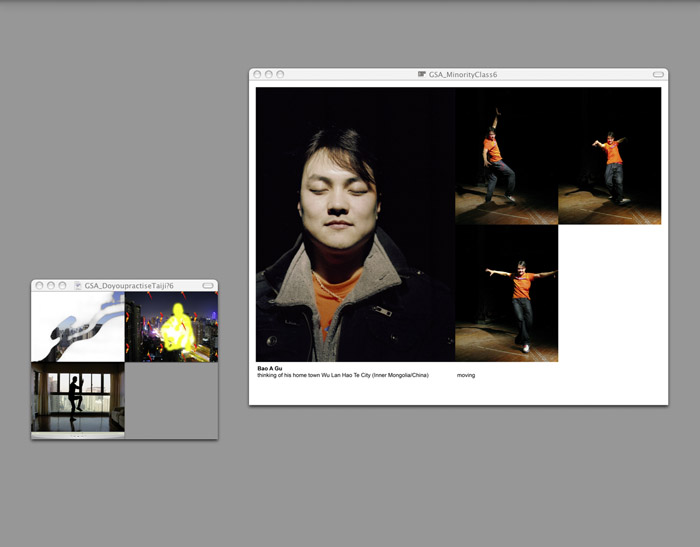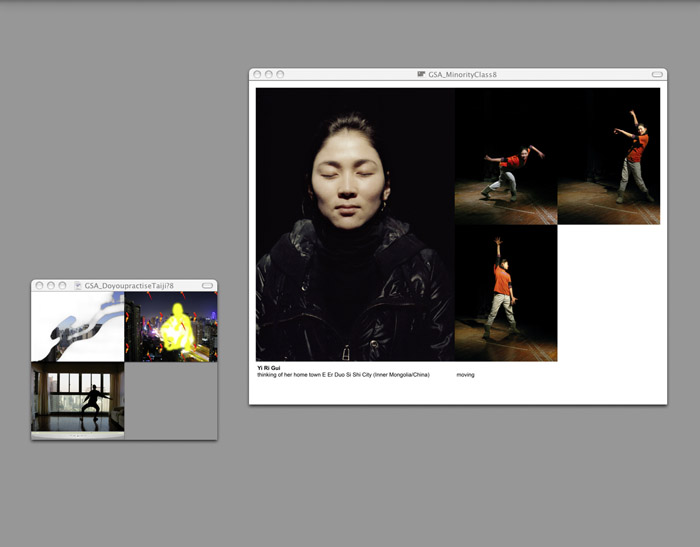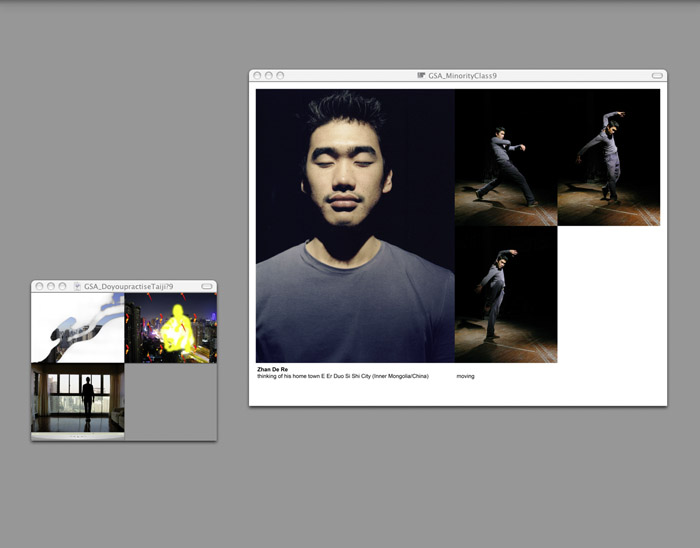|
GSA_AchtsamkeitStille
(10)
„Black
Box“
2009/2010
Unter „Black Box“ versteht man in der Kybernetik eine
Maschine, die einen Input in einen Output verwandelt, ohne dass
man wissen muss/weiß, was im Einzelnen in der Maschine, im
System, vor sich geht.
An
der Shanghai Theatre Academy (STA) verfügen sowohl das Acting
Department an der Huashan Road als auch das Kun-Opera Department
an der Lianhua Road über in schwarz gehaltene
Probebühnen(räume). Man nennt sie im internen Sprachgebrauch
„Black Box“.
Black Box Huashan Campus Black
Box Lianhua Campus
(jeweils
Rückwand Zuschauerraum)
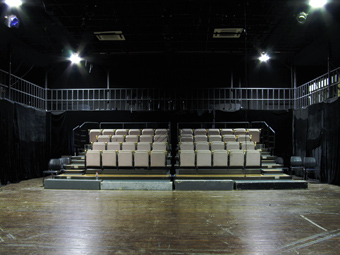
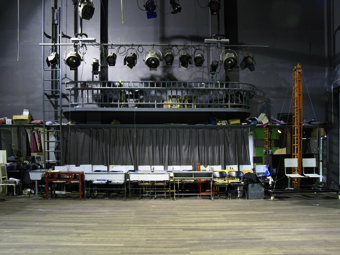
GSA_AchtsamkeitStille
(11)
Black Box Huashan Campus Black
Box Lianhua Campus
(jeweils
seitliche Wand 1)

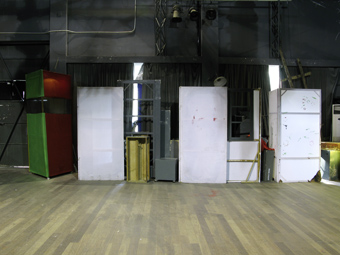
GSA_AchtsamkeitStille
(12)
Black Box Huashan Campus
Black Box Lianhua Campus
(jeweils
seitliche Wand 2)
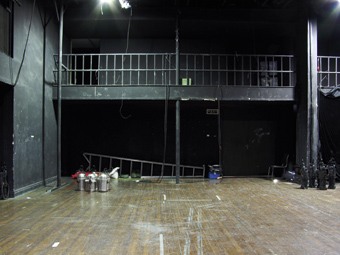
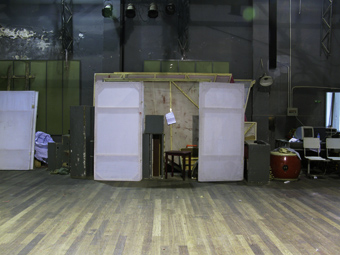
GSA_AchtsamkeitStille
(13)
Black Box Huashan Campus
Black Box Lianhua Campus
(jeweils
Rückwand Bühnenraum)

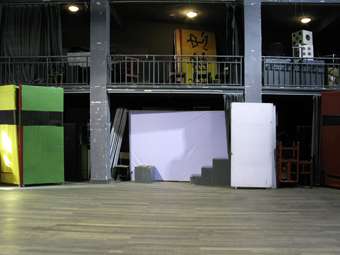
GSA_AchtsamkeitStille
(14)
„Gerechtigkeit
für Cindy (Ding Ding)“ 2009/2010
Im Rahmen eines
Auslandsatelier-Aufenthaltes des BMUKK an der Shanghai Theatre
Academy bilden die Schauspiel- und Regie-Studenten Cindy (Ding
Ding) und Fly (Fei) am 1. Oktober 2009 am Flughafen Pudong das
freundliche Empfangskomitee für zwei österreichische Gastkünstler
(Elisabeth Grübl und Harald Gsaller). Cindy und Fei übernehmen
die Einweisung; die offizielle Academy wird sich erst nach
Abschluss der mehrtägigen Feiern zu „60 Jahre Volksrepublik
China“ bei den Stipendiaten melden.
Schon in den ersten Wochen eröffnet
sich Gsaller ein Dilemma, nämlich, dass der Versuch, die Liste
der noch von Österreich aus konzipierten Arbeitsvorhaben
abzuarbeiten, immer stärker mit weiter auftauchenden,
interessanten Optionen für Arbeiten vor Ort kollidiert.
Auch zwei von Gsaller nach den
ersten beiden Wochen angedachte/skizzierte Foto-Projekte –
Projekt A: Cindy, Fei sowie ihre Studien-KollegInnen sollen des
morgens in einem öffentlichen Park Taiji-Übende mimen, gerade
weil sie keinen blassen Schimmer von echtem Taiji haben, und
Projekt B: Cindy, Fei und die Anderen betreiben „Pajama
Strolling“ und überqueren in geschlossener Formation des
abends die vor ihrem Studentenheim liegende, 10-spurige Central
Yan’an Road in Pyjamas) – diese beiden Projekte geraten
unter die Räder, fallen letztlich den Parametern verfügbare
Zeit, Prioritätenverschiebung, Reserve an 120er-Rollfilm, stark
fallende (Außen)Temperaturen zum Opfer …
„Gerechtigkeit für Cindy (Ding Ding)“
wurde im Rahmen der Ausstellung „Things we never did“ in
der Künstlervereinigung MAERZ (www.maerz.at)
in Linz erstmals im Dezember 2009 gezeigt, und ist Cindy und Fei
gewidmet.
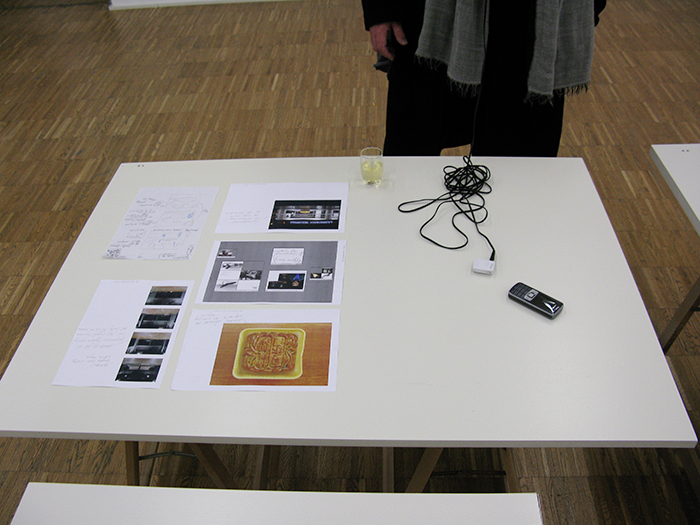
Installation
in der Galerie MAERZ, Linz
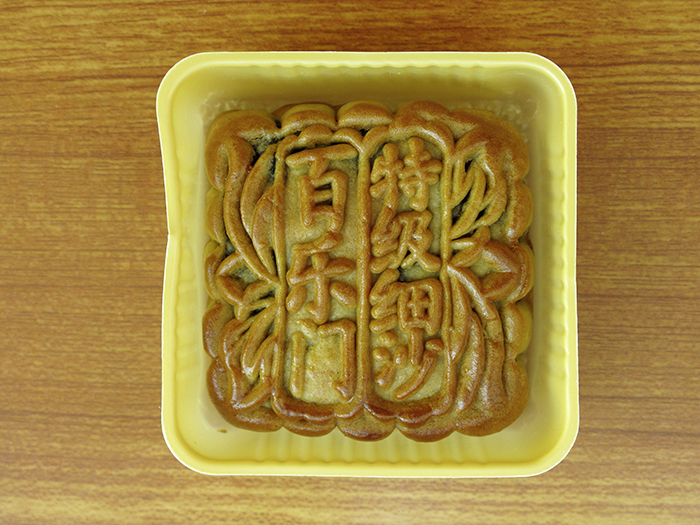
Glückskeks, überreicht
von Cindy und Fei am Morgen des 2. Oktober 2009

(Im) Erdgeschoss des
Studentenheimes der beiden an der Central Yan’an Road.

Platzhalter in weiß:
der konzeptuell-strategische Platz, den die beiden Arbeiten „Pajama-Strolling“
und „Taiji im Park“ mit Cindy, Fei und den Anderen, wären
sie denn je realisiert worden, innerhalb meiner Arbeiten mit
China-Bezug einnehmen hätten können.

Skizze zu „Taiji-Truppe im Park“ (Detail)
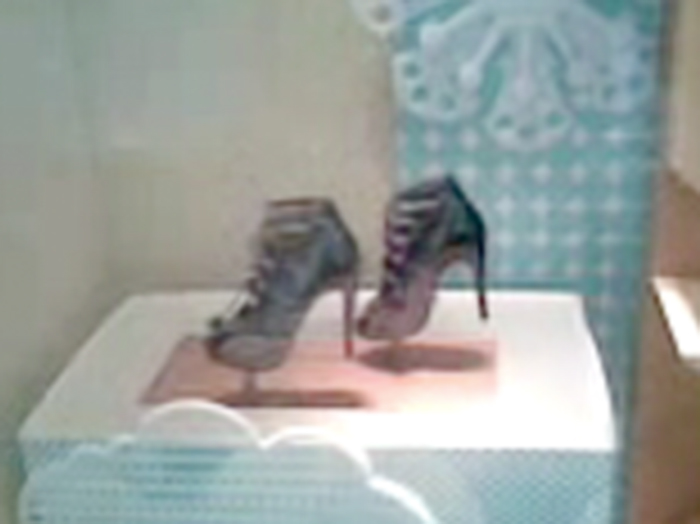
Cindy und ich bewundern ein als „running shoes“
inszeniertes, sündteures Paar Schuhe von „Hermes“ in einer
Shoppingmall an der hippen West Nanjing Road.
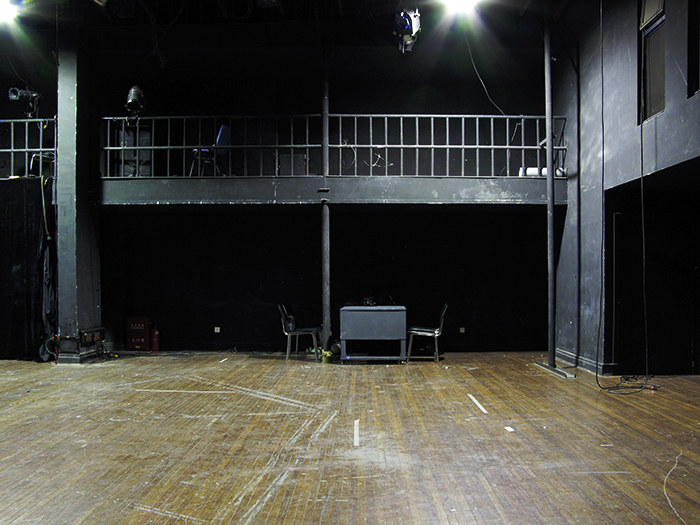
Die mögliche Ausweich-Location, die „Black Box“
der Shanghai Theatre Academy an der Huashan Road, bleibt auch
den ganzen November über besetzt.
GSA_AchtsamkeitStille
(15)
”Shou/Longevity“
2010/2012
My contribution “Shou/Longevity” to AchtsamkeitStille2012 deals with decoding/constructing traces of
daoism and magic thinking in urban Shanghai. The work consists
of three parts:
”Shou/Longevity“

Amongst skyscrapers near Central Yan’an Road the
inhabitants find themselves confronted with a very large banner
showing a decent calligraphy of the daoistic sign ”Shou“:
longevity, the long (good) life, if one lives according to the
daoistic rules.
We wonder who placed the banner there, and for how long
it will be left visible to the public, being rather a hint to
forgotten knowledge than referring to a thing to buy as normal
advertisements do.
”To
protect the houses against the demons“

(video, 0min20s); (bottom):
A bird’s-eye view of the ritual of „Protecting the
houses“ by igniting firecrackers. A relic of old magic
practice/superstition common in the streets of modern Shanghai.
”There
are no pigeons in Shanghai“
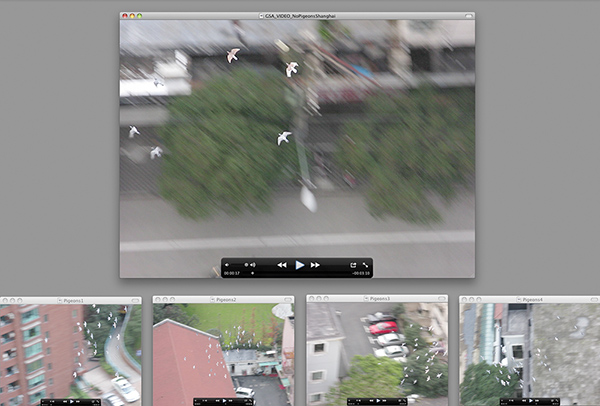
(video, 3min27sec); (top):
Normally you don’t see many birds in the sky of
Shanghai. In fact it was the noise created by the above
mentioned firecracker rituals that made the author remark a
flock of pigeons drawing large ephemeral circles in the sky. Not
stopping flying, obviously in a state of panic. As if they had
remembrance/knowledge of the extinction of the sparrows in
Shanghai a long time ago. An echo from the distant ”War
against the Sparrows“ in 1958.
Vienna, November 2012
____________________
GSA_AchtsamkeitStille
(16)
”Chinese
Flag Proposals“ 2012
(15 Text panels / Flags in red and yellow. Text
according to the principle of ”wu wei: Do nothing (with
nothing left undone)“; proportions and graphic form of the
panels referring to the Chinese Flag)
A proposal for an artist’s public intervention in
China: The thing to do would be to present elements / stratagems
of daoistic philosophy graphically embedded in panels or flags
in public contexts (public places, newspapers, TV, internet
…), so as to allow them to be found, read and interpreted. All
the proposed flags deal with a central daoistic principle called
”wu wei: Do nothing (with nothing left undone)“ as mentioned
by Laozi. The concept of ”wu wei“ seems to be as far away as
possible from modern Chinese life concepts of eager activism and
thus may be representing a (forgotten or repressed) pole of
inner clarity and effortlessness.
The text elements are taken from Francois Jullien’s
”A Treatise on Efficacy – Between Western and Chinese
Thinking”, University of Hawai’i Press, Honolulu 2004“.
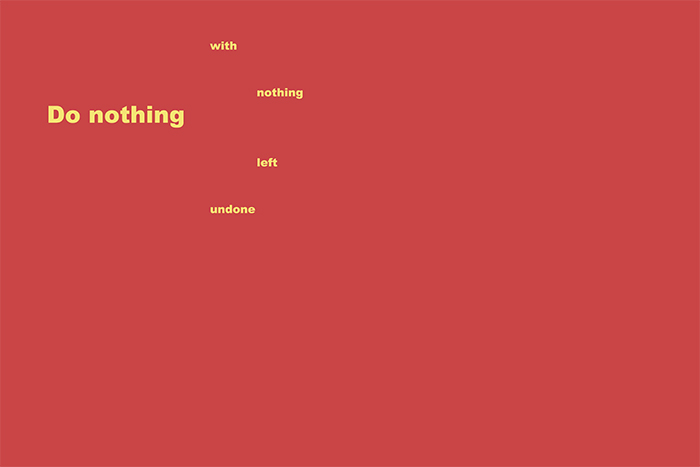

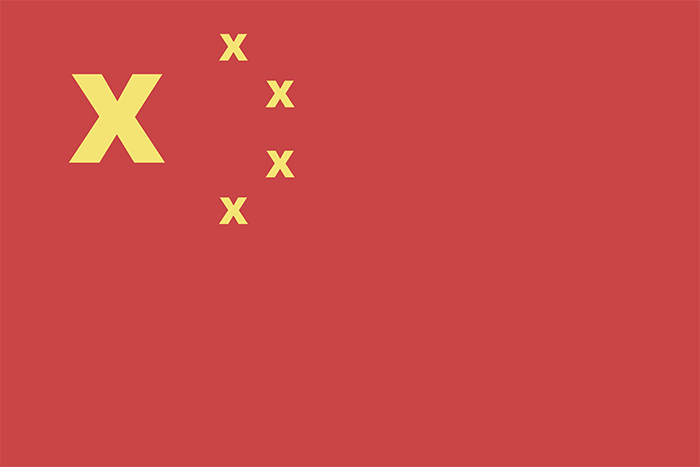

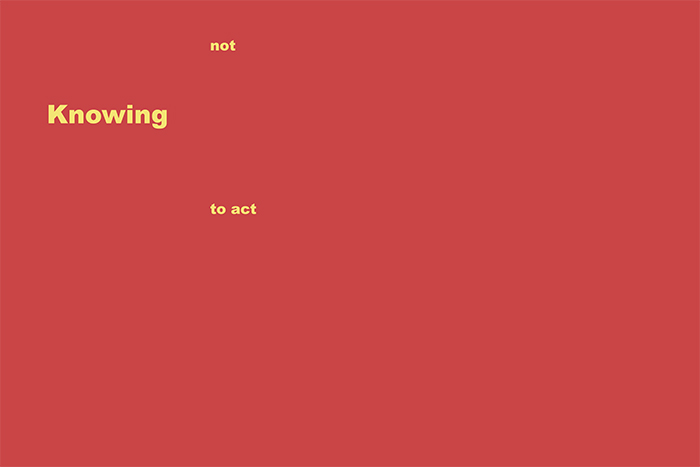
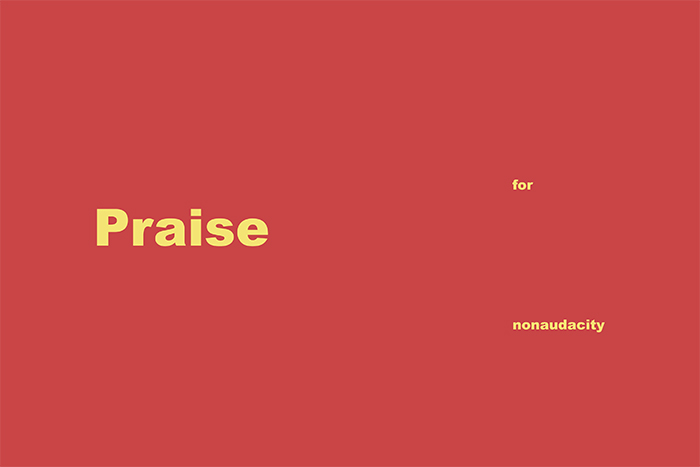

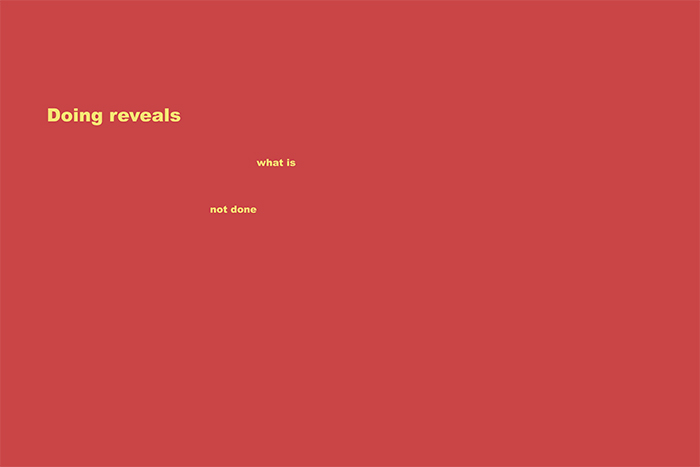
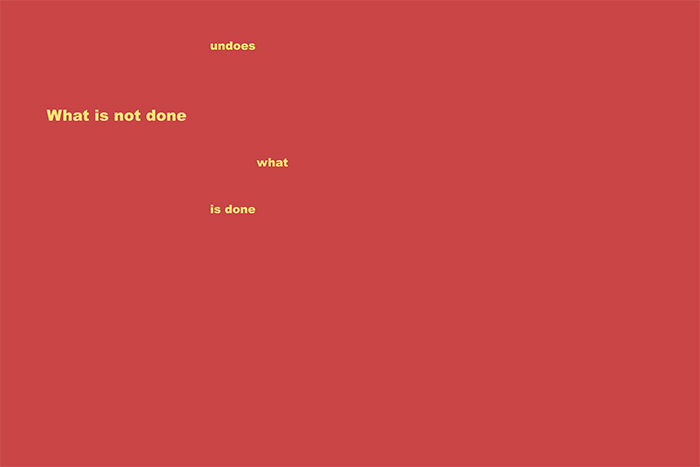
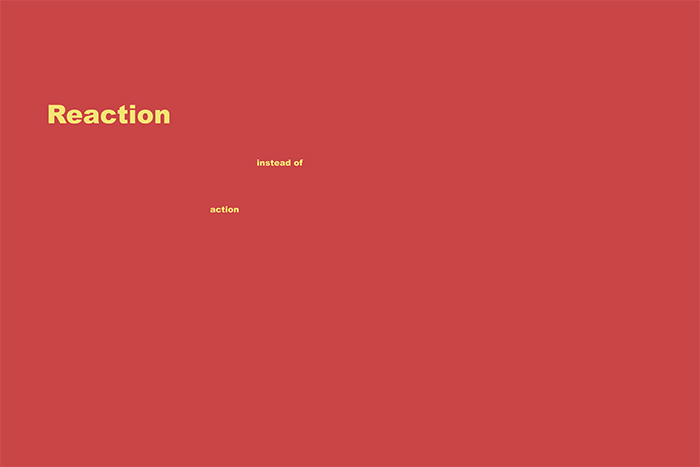
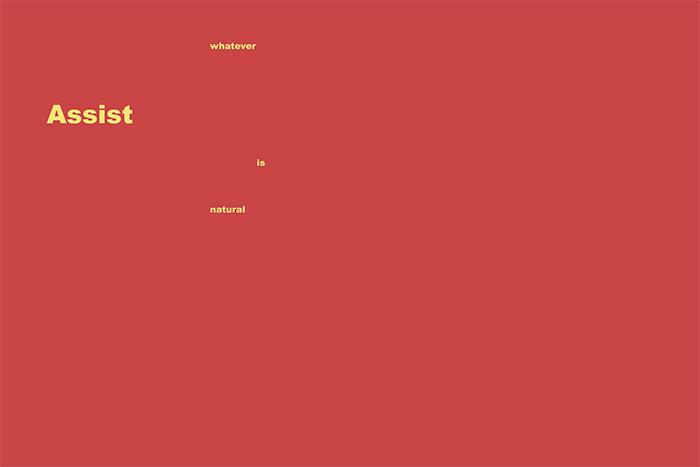

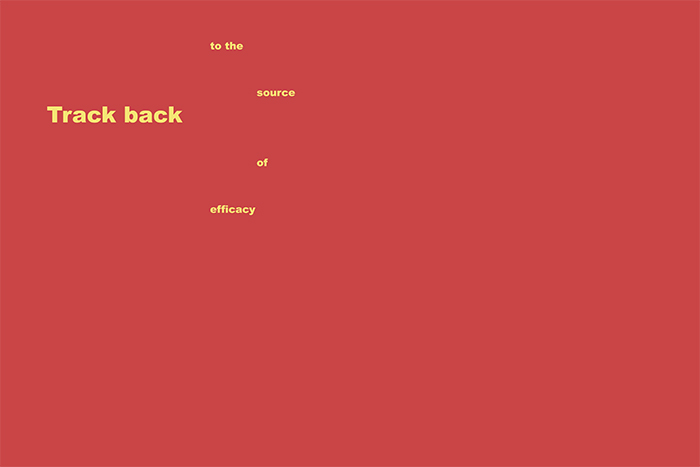
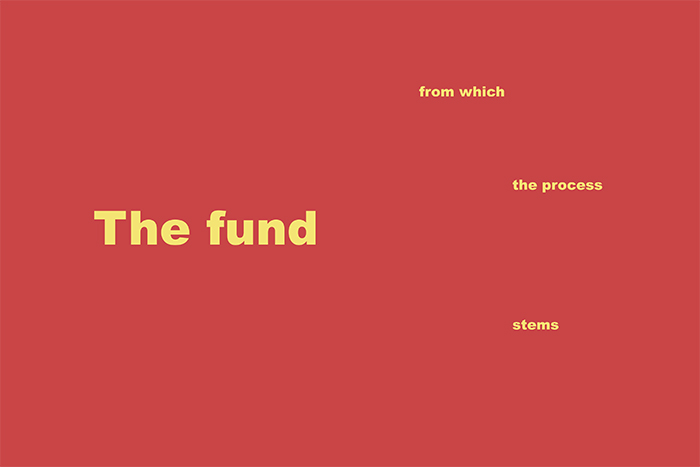

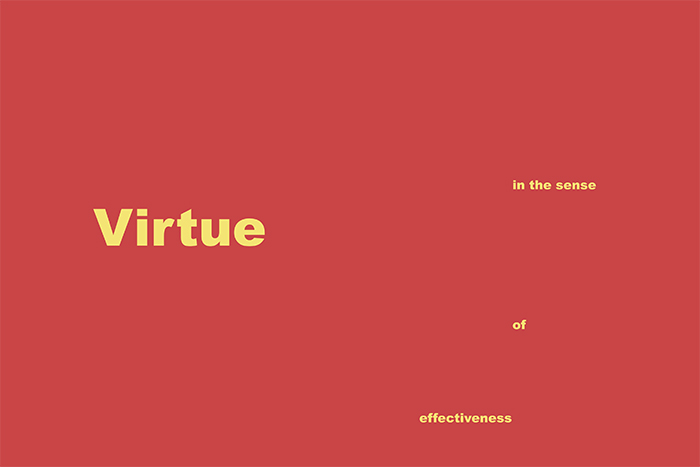

|
